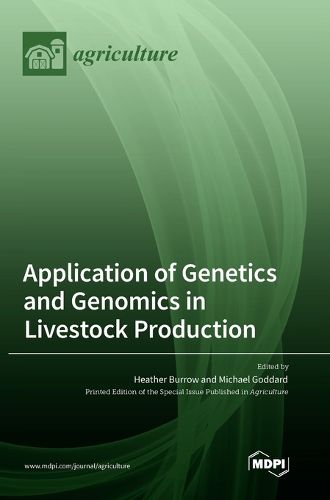Readings Newsletter
Become a Readings Member to make your shopping experience even easier.
Sign in or sign up for free!
You’re not far away from qualifying for FREE standard shipping within Australia
You’ve qualified for FREE standard shipping within Australia
The cart is loading…






This title is printed to order. This book may have been self-published. If so, we cannot guarantee the quality of the content. In the main most books will have gone through the editing process however some may not. We therefore suggest that you be aware of this before ordering this book. If in doubt check either the author or publisher’s details as we are unable to accept any returns unless they are faulty. Please contact us if you have any questions.
The delivery of genome sequences for most livestock species over the past 10-15 years has generated the potential to revolutionise livestock production globally, by providing farmers with the ability to match individual animals to rapidly changing climates, production systems and markets. Initially, technologies such as marker-assisted selection, functional genomics, gene expression, transcriptomics, proteomics and metabolomics were hailed as technologies with the greatest promise of delivering on that potential. To date, however, their potential for the delivery of practical solutions for livestock farmers is still to be realised, though they do provide supportive evidence of value to other approaches. Gene editing using tools such as CRISPR-Cas9 also show strong promise, but face regulatory hurdles before practical applications can be delivered for use by farmers. The technology that has had the greatest impact to date is genomic selection. This year marks 20 years since genomic selection was developed by Meuwissen, Hayes and Goddard (Genetics, 2001, 157: 1819-1829) and genomic selection has been successfully applied in livestock, plants and even human health applications. However, genomic selection also faces ongoing limitations around lack of essential phenotypes, particularly for expensive or difficult-to-measure traits and possibly the need for faster/greater computational capacity. It is therefore timely to examine the impact of genomic technologies generally, and to identify successes and limitations that need to be overcome in order to achieve practical applications for livestock producers in future.
$9.00 standard shipping within Australia
FREE standard shipping within Australia for orders over $100.00
Express & International shipping calculated at checkout
This title is printed to order. This book may have been self-published. If so, we cannot guarantee the quality of the content. In the main most books will have gone through the editing process however some may not. We therefore suggest that you be aware of this before ordering this book. If in doubt check either the author or publisher’s details as we are unable to accept any returns unless they are faulty. Please contact us if you have any questions.
The delivery of genome sequences for most livestock species over the past 10-15 years has generated the potential to revolutionise livestock production globally, by providing farmers with the ability to match individual animals to rapidly changing climates, production systems and markets. Initially, technologies such as marker-assisted selection, functional genomics, gene expression, transcriptomics, proteomics and metabolomics were hailed as technologies with the greatest promise of delivering on that potential. To date, however, their potential for the delivery of practical solutions for livestock farmers is still to be realised, though they do provide supportive evidence of value to other approaches. Gene editing using tools such as CRISPR-Cas9 also show strong promise, but face regulatory hurdles before practical applications can be delivered for use by farmers. The technology that has had the greatest impact to date is genomic selection. This year marks 20 years since genomic selection was developed by Meuwissen, Hayes and Goddard (Genetics, 2001, 157: 1819-1829) and genomic selection has been successfully applied in livestock, plants and even human health applications. However, genomic selection also faces ongoing limitations around lack of essential phenotypes, particularly for expensive or difficult-to-measure traits and possibly the need for faster/greater computational capacity. It is therefore timely to examine the impact of genomic technologies generally, and to identify successes and limitations that need to be overcome in order to achieve practical applications for livestock producers in future.